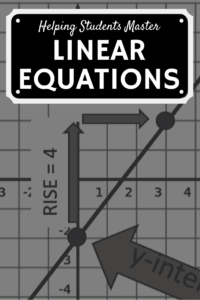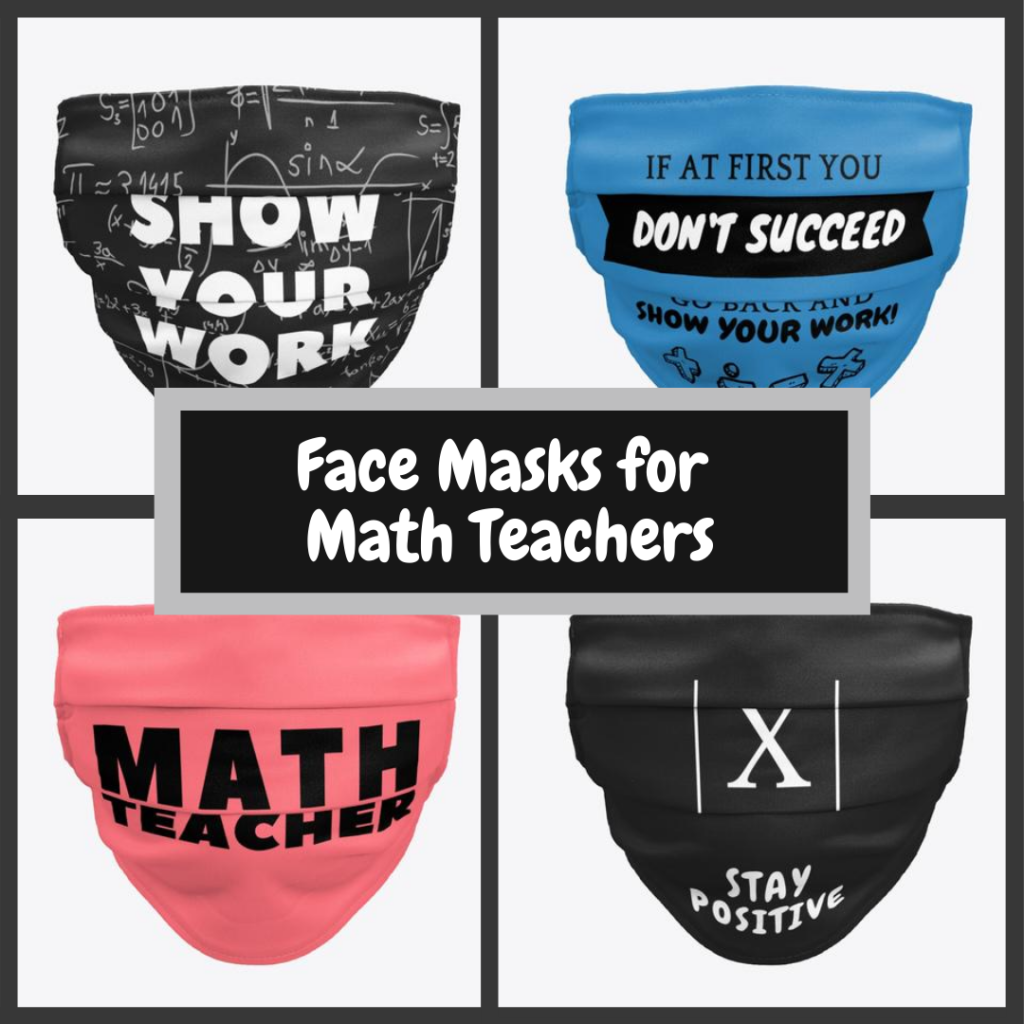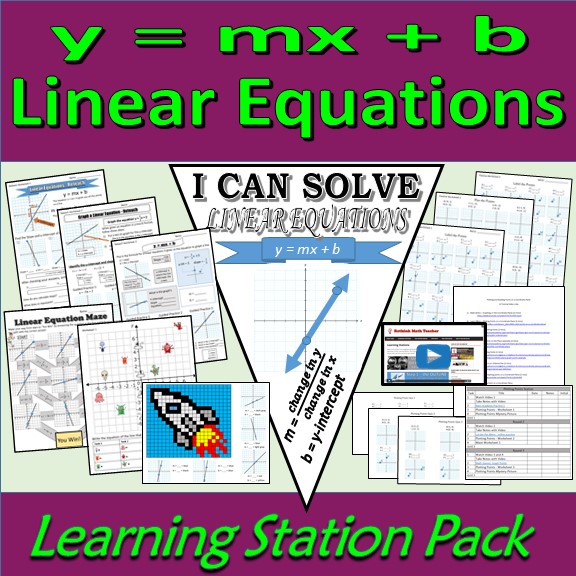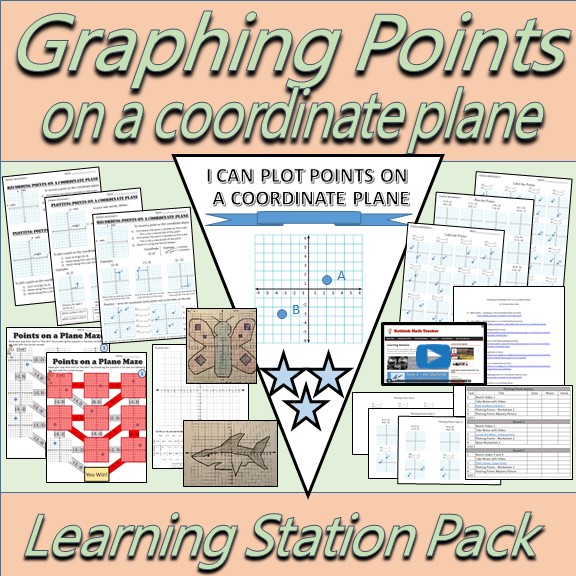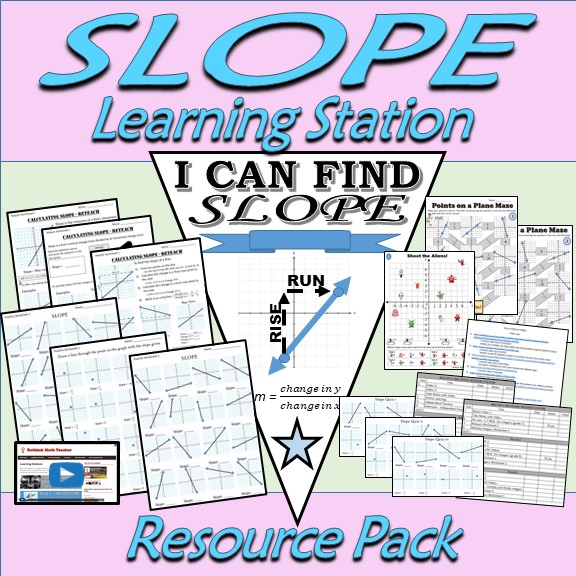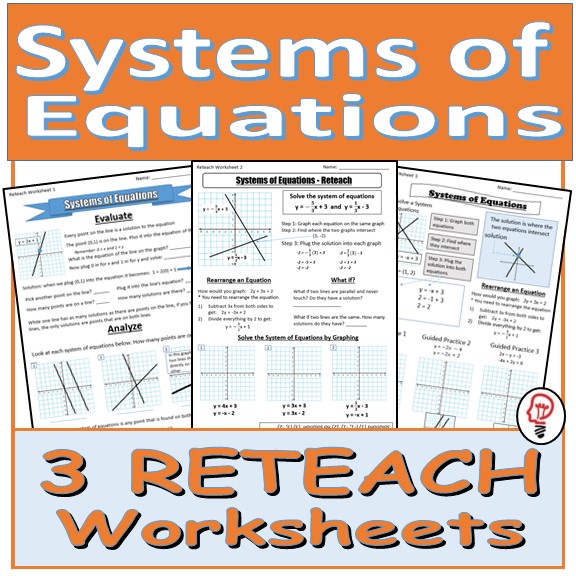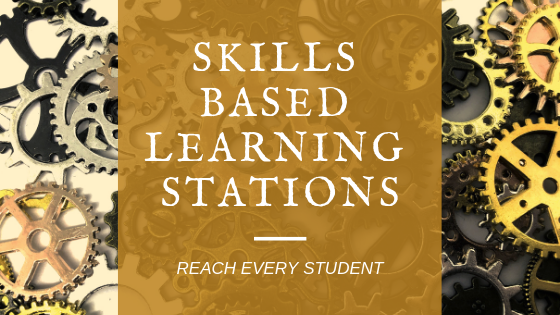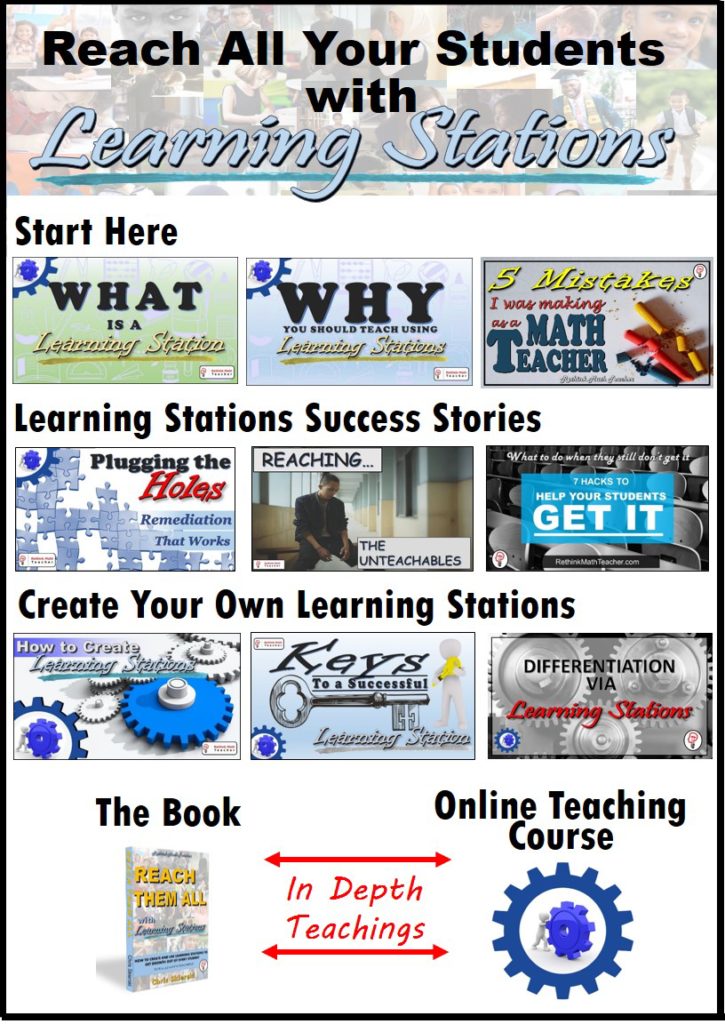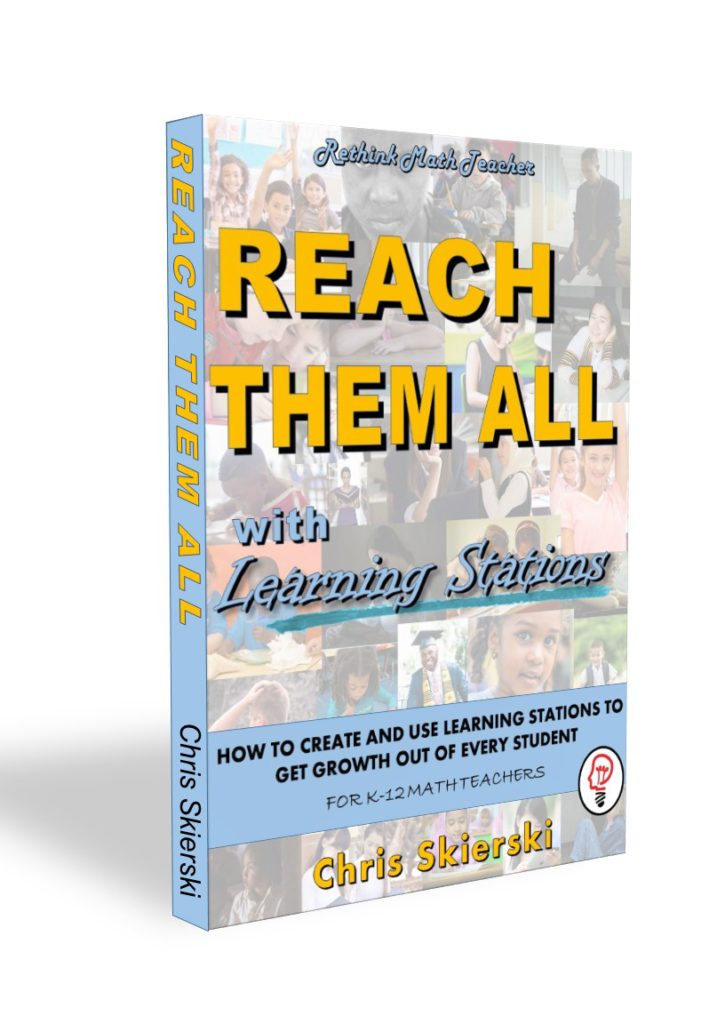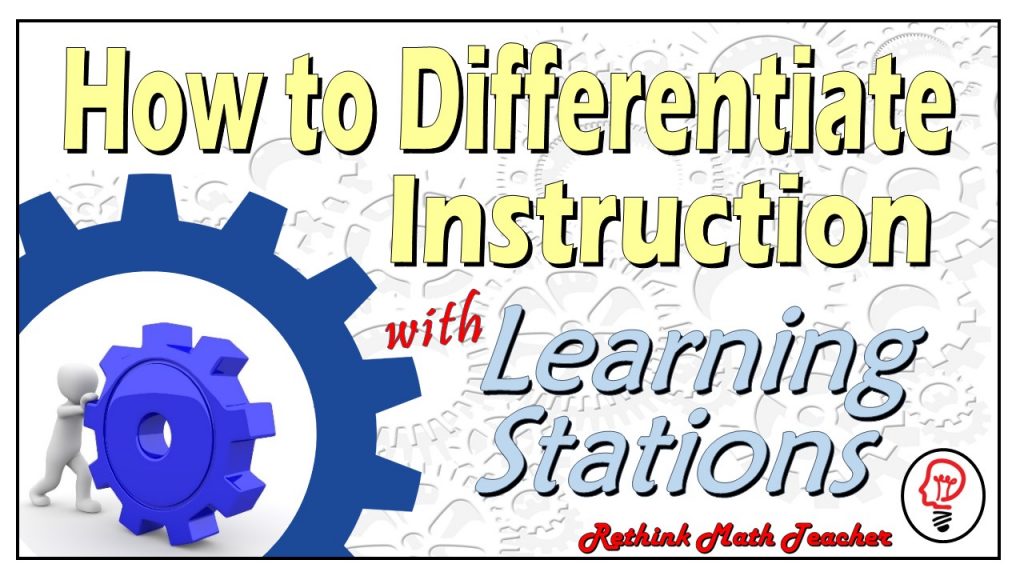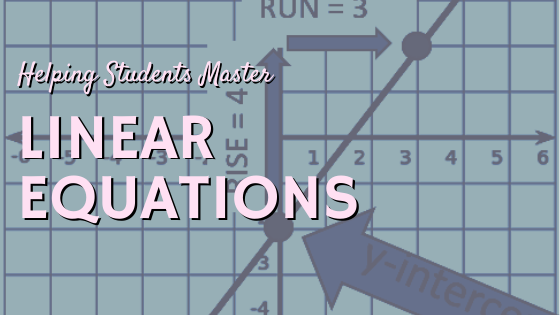
Linear Equations, y = mx + b, is such a foundational skill – yet many students fail to master the concept, which affects them in all of their upper math classes.
As a teacher, it’s frustrating to watch your students struggle on something that is not terribly difficult. After all, there’s not a lot of math involved, it’s just plotting points on a coordinate plane and calculating slope (which is just counting)!
So here’s some strategies that can help your students find success.
There’s No Magic Pill
I often see teachers asking each other what they do to help their students master the concept. Is there some special analogy you tell? An anchor chart that makes it all so clear? A song? A dance?
While all of these strategies are fine and well, none of them are the magic elixir that will solve all your students’ woes and suddenly make them proficient at linear equations.
There are a few common-sense strategies that help every person master every skill ever taught to man. And implementing these strategies will help.
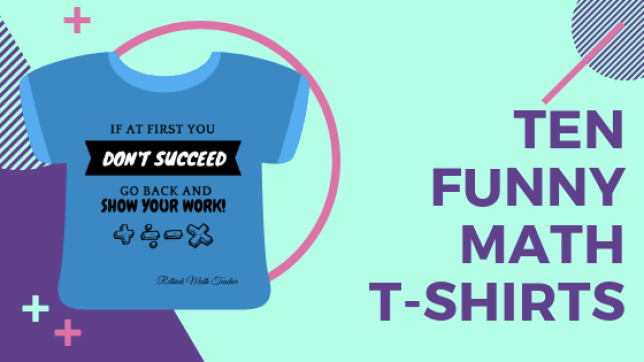
Immediate Feedback
The first high-impact, easy-to-implement strategy that helps students master a concept is providing them with immediate feedback.
Most skills that we learn in life naturally give us immediate feedback.
- If you’re learning archery, you immediately know whether or not you’re hitting your mark
- If you’re learning the guitar, you can usually hear whether or not you’re playing the chord correctly
- If you’re learning to shoot a basketball, you can see if it went in the hoop or not.
Immediate feedback is powerful. It tells us if we’re doing something incorrectly so that we can adjust, or if we’re doing it correctly so that we can gain confidence and continue practicing the skill properly.
Sadly, academia doesn’t always naturally produce such feedback. Thus, if the teacher is not providing immediate feedback to the student, they don’t know whether or not they’re doing the work correctly. That makes it difficult for them to gain confidence as they practice – and impossible to learn from their mistakes. (And mistakes are great teachers).
So if your students are working on graphing linear equations, provide them with a way to receive immediate feedback.
A great way to do this is to have them do their practice on an online website like IXL or Khan Academy. These platforms provide your students with questions, and after the student gives an answer they are immediately told whether or not they did it correctly.
If you don’t have access to technology in the classroom, you can provide answer sheets, or chunk the practice down and provide answers after students have completed a very few number of problems.

Don’t move on until they’re ready
Too often we teach students slope and then we stop teaching it and start teaching linear equations, though all of the students have not yet mastered slope. How can they graph a linear equation if they don’t understand slope?
When teachers hear me say this, they often scoff, “Well I can’t keep the whole class back on account of a few students!” And I agree. You can’t, and you shouldn’t. But you can retain that student while progressing the rest of the class.
When I tell teachers to do this type of skills-based differentiation, they often scoff, “So I have to make two different lesson plans?”
I don’t think that you need two different lesson plans, but I do think you should be remediating the students who aren’t ready to move on.
How?
I accomplish this through skills-based learning stations.
After doing a whole group lesson, or mini-lesson (or activity) we will break into our skills-based learning stations as our independent practice. The students who haven’t yet mastered slope will do practice problems – with immediate feedback – on slope. Those who have mastered slope, work on linear equations. (I even put students in a skills-based learning station for plotting points on a coordinate plane. I figure if they can’t do that, they won’t be able to master slope.)

Celebrate Their Success
Are you making it a big deal when your students are successful? You should.
We say education is the most important thing, so let’s treat it that way. When students master a concept, like slope, or linear equations, celebrate it. Send home certificates, put their name on the wall under a pennant, call home, or do something else creative to make them feel proud of their accomplishment.
Don’t Penalize their Failure
We’ve already touched on this a bit, but failure is part of the learning process. So don’t penalize them for making mistakes. We learn through experimentation, messing up, and failing – but students are discouraged from this type of exploration out of fear of making mistakes.
Instead, encourage them to wrestle with the material, try new methods, and make mistakes. To do that, you have to not ding up their grade when they get problems wrong, and you have to give them the opportunity to get the problem right and earn the grade back, without being left behind.
But How?
The strategies mentioned above are not hard to do, but it’s not how we are used to conducting our classrooms. So the obvious question is: How?
How can we encourage creativity, and allow students to make mistakes while differentiating and giving students as long as they need?
I do this with Skills-Based Learning Stations.
Skills Based Learning Stations will allow you to differentiate your remediation, give students as long as they need, and creates an easy opportunity to celebrate success.
More Resources
I have three resources to help you start making skills based learning stations, plus some premade ones for Linear Equations.
Pre-Made Skills Based Learning Stations for Linear Equations
Resources for Creating and Implementing Skills Based Learning Stations:
1. Skills Based Learning Stations – an online article
This article will help you better understand what a skills based learning station is and how it works.
2. A free cheat sheet
This digital download is full of helpful tips and resources to help you get started with skills-based learning stations
3. The Book: Reach Them All.
This book will walk you through the process, step by step, or creating skills based learning stations, as well as how to implement them with success in your class. It’s available as a digital download through TpT, or as a soft cover through Amazon.
4. An online course: How to Create and Implement Learning Stations.
This course has all the content from the book, but delivered in video format with me as your teacher. Ton’s of resources are included, as well as a digital copy of the book. Enroll here.
